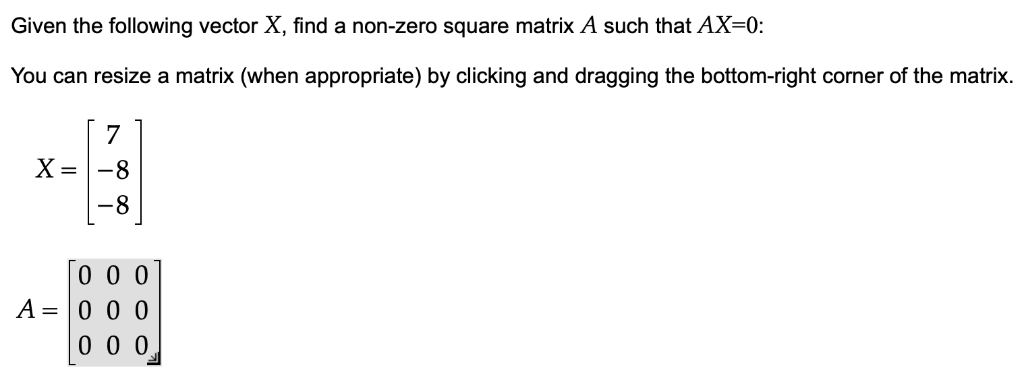
Zero multiplied by vector results in a null vector:įinally, the null vector is perpendicular to every vector of that vector space. Non-zero vector v multiplied by null vector results in zero vector: Where a null vector is subtracted from vector a the result is vector a: In many ways the properties of null vectors are similar to the number 0. Consistent with the additive identity property, when we add a null vector to vector a the result is vector a: Three-dimensional vectors add an additional direction, so there is an extra component for zero vector (0, 0, 0). Two-dimensional vectors have vector components which tell you how far the vector goes in each direction. The velocity vector of a stationary object.Displacement of a car that ends up back where it started from,.The position vector for the origin in a coordinate system,.Another way to think of this type of vector is that it’s simply a vector with the same start and end positions. Zero vector acts like a placeholder, much like the number “0” acts like a placeholder for a number system. Zero vectors have no length, so therefore have no direction. To find the direction we use the inverse of tan:Ĭheck out our YouTube channel for hundreds of videos on elementary stats, linear algebra and more! Zero VectorĪ zero vector has no magnitude and an undefined direction. It is usually denoted by a bold 0, 0 → or. What is the direction of vector AB where the initial point A is (2,3) and the end point B is (5,8)įirst, we plug the coordinates into our formula for direction: To find the direction of a vector we measure the angle that the vector makes with a horizontal line. The magnitude of AB = 4.72 Determining the Direction of a Vector Where we are provided with the coordinates of the points we can use the distance formula).įind the magnitude of vector AB where the initial point A is (2, 2) and the end point B is (6, 4).

To find the magnitude of vector AB we need to determine the distance between points A and B. Let’s take a look at line AB on the following graph: Watch the following TEDEd video for a fantastic (and short!) overview of vectors:įinding the Magnitude and Direction of a Vector As we’re dealing with an x-y coordinate system here, the array would be fully described by: Note though, that you need to give the array a context in order to fully describe the vector. The same vector can also be represented by an array (grid): Note the circumflex above the x and y: that tells you you’re dealing with a vector. The vector, which tells you how far a point is from the origin, can also be written as: The vector is placed on this coordinate system (a Cartesian plane) at location x = 2, y = 4, which can be written as an ordered pair: (2, 4). For example, take the following vector, represented by an arrow: They can be written mathematically in a few different ways. Usually, vectors are denoted by bold face type: V. A scalar tells you how far (1 mile) but in order to get home you need to know which direction to walk: North? Southwest? East? EEW? A vector tells you how far and in what direction: 2 miles West. It’s magnitude is represented by its length.Ī vector starts at the tail of the arrow and ends at the head.Īs a simple example, let’s say you wanted to walk a mile home from work. When you have more than one dimension, you need a vector to show magnitude and direction.Ī vector can be represented by an arrow. in a negative direction), while +10 means to go 10 spaces to the right. For example, -10 means go 10 spaces to the left on the number line (i.e.

When you have one dimension, magnitude is given by a single number, and direction can be noted by either a positive direction (+) or a negative direction (-). Vectors in this “Euclidean” sense are extremely useful for many mathematical applications. Most authors just shorten the name to “vector” and assume you know that you’re dealing with vectors in Euclidean space. When you learn about vectors in math, you’re usually learning about a specific type of vector called a Euclidean vector. Feel like "cheating" at Calculus? Check out our Practically Cheating Calculus Handbook, which gives you hundreds of easy-to-follow answers in a convenient e-book.


 0 kommentar(er)
0 kommentar(er)
